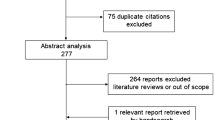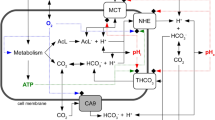Abstract
Theory suggests that the transmembrane pH gradient may be a major determinant of the distribution of lipophilic weak electrolytes across the cell membrane. The present study evaluates the extent to which this factor contributes to pH-dependent changes in the cytotoxicity of two such chemotherapeutic drugs: chlorambucil and mitoxantrone. Experiments were performed with two cell types of the same origin but exhibiting different pH gradients at the same extracellular pH (pHe): CHO cells cultured under normal physiological conditions (pH 7.4) and acid-adapted cells obtained by culturing under low pH conditions (6.8). Over the pHe range examined (6.0-7.6), the difference between intracellular pH (pHi) and pHe increased with decreasing pHe. Acid-adapted cells were more resistant to acute changes in pHi than normal cells, resulting in substantially larger gradients in these cells. Drug cell survival curves were performed at pHe values of 6.4, 6.8 and 7.4. The cytotoxicity of chlorambucil, a weak acid, increased with decreasing pHe, and low pH-adapted cells were more sensitive than normal cells at the same pHe. In contrast, for the weak base, mitoxantrone, cytotoxicity increased with pHe and was more pronounced in normal cells. As predicted by the theory, the cytotoxicity of both drugs changed exponentially as a function of the pH gradient, regardless of cell type. For mitoxantrone, the rate of such change in cytotoxicity with the gradient was approximately two times greater than for chlorambucil. This difference is probably due to the presence of two equally ionizable crucial groups on mitoxantrone vs one group on chlorambucil. It is concluded that the cellular pH gradient plays a major role in the pH-dependent modulation of cytotoxicity in these weak electrolytes. The data obtained also suggest that a pronounced differential cytotoxicity may be expected in vivo in tumour vs normal tissue. In comparison with normal cells at a pHe of 7.4 (a model of cells in normal tissues), acid-adapted cells at a pHe of 6.8 (a model of cells distal from supplying blood vessels in tumours) were more sensitive to chlorambucil, with a dose-modifying factor of approximately 6, and were more resistant to mitoxantrone by a factor of 14.
Similar content being viewed by others
Author information
Authors and Affiliations
Rights and permissions
About this article
Cite this article
Kozin, S., Gerweck, L. Cytotoxicity of weak electrolytes after the adaptation of cells to low pH: role of the transmembrane pH gradient. Br J Cancer 77, 1580–1585 (1998). https://doi.org/10.1038/bjc.1998.260
Issue Date:
DOI: https://doi.org/10.1038/bjc.1998.260
- Springer Nature Limited
This article is cited by
-
The pH partition theory predicts the accumulation and toxicity of doxorubicin in normal and low-pH-adapted cells
British Journal of Cancer (1999)




